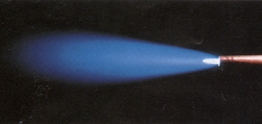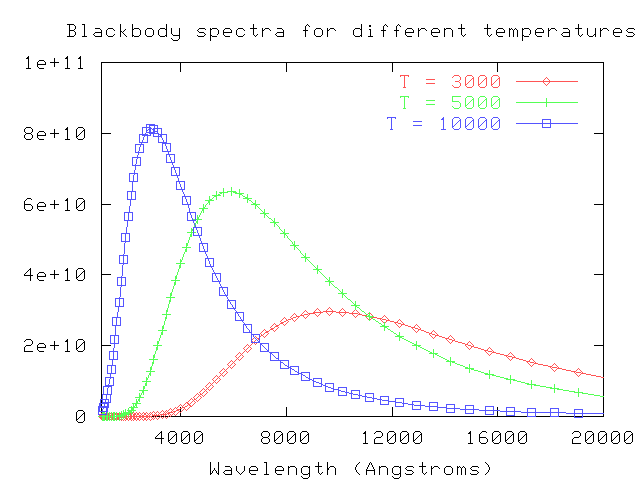

 Copyright © Michael Richmond.
This work is licensed under a Creative Commons License.
Copyright © Michael Richmond.
This work is licensed under a Creative Commons License.
When you look at me, you see light which is emitted by the flourescent bulbs overhead and bounces off me or my clothing. If I turn off the lights, and close all the shades and drapes so that no outside light can enter the room, will you see me? No.
But a rattlesnake could. How? The rattlesnake has organs which can detect the heat my body gives off. Heat is, in fact, one kind of electromagnetic radiation: the kind we call infrared. Even if no lights shine upon me, my skin still emits this infrared radiation.
In fact, to a rough approximation, all objects emit radiation in a manner which depends largely on their temperature. Human eyes can't see this radiation when an object is at room temperature ... but they can begin to sense it when the temperature rises to many hundreds of degrees. For example, you can see the radiation emitted by both of the objects below.


Q: Which of the two is hotter? How do you know?
Q: Which of the two would do more damage to
your hand if you were to reach out and
grab it? Why?
As the temperature of an object rises, the radiation it emits changes in two ways:

If A is ____ times as hot as B it emits this much more power
------------------------------- ------------------------------
1.1 1.5
1.5 5
2 16
3 81
10 10,000

In fact, there is a simple mathematical formula which relates the temperature of a star and the peak wavelength of its spectrum (see equation 14-18 in your textbook):
2.898 mm
temperature (K) = --------------------------
peak wavelength
You don't need sophisticated equipment to determine temperatures very roughly; just look at the sky with your own eyes.

Credit & Copyright: Juan Carlos Casado

Credit and Copyright: Akira Fuji
Red stars are cool (temperatures below 4500 K), and blue or blueish white stars are hot (temperatures above 9000 K).
 Copyright © Michael Richmond.
This work is licensed under a Creative Commons License.
Copyright © Michael Richmond.
This work is licensed under a Creative Commons License.